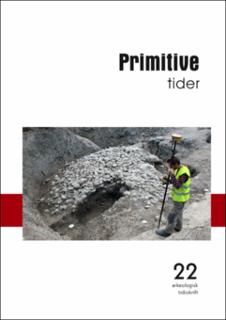| dc.contributor.author | Sand-Eriksen, Anette | |
| dc.contributor.author | Skre, Dagfinn | |
| dc.contributor.author | Stamnes, Arne Anderson | |
| dc.date.accessioned | 2021-02-15T11:42:28Z | |
| dc.date.available | 2021-02-15T11:42:28Z | |
| dc.date.created | 2020-12-15T15:06:55Z | |
| dc.date.issued | 2020 | |
| dc.identifier.citation | Primitive tider. 2020, 22 75-94. | en_US |
| dc.identifier.issn | 1501-0430 | |
| dc.identifier.uri | https://hdl.handle.net/11250/2728068 | |
| dc.description.abstract | Due to increasing hobby metal detecting, archaeological museums receive thousands of finds each year. To improveour understanding of their depositing history and possible connection to structures beneath the plough-zone, theDirectorate for Cultural Heritage selected the find-rich field at Storhov in Elverum for a pilot study. This article presentsan outline of the results from the three-part methodological survey at Storhov; comparing and assessing metaldetecting finds, results from archaeological excavation, and interpretations from GPR survey on the site.In light of these results, the article discusses how the metal detecting finds ended up in the ploughsoil. Based on types,dates and distribution of finds and structures, we conclude that most of the finds – ornaments, tools, and small itemscarried in a belt or in a pouch – were distributed through manuring or lost while working in the field. Thus, whensystematic metal detecting on a site predominantly produces such finds, it is a suitable method to bring forth informationon cultivation in the Iron and Middle Ages. The results also suggest that in sites where such metal finds dominate, thereis potential for finding remains from settlements and graves, either on the site or nearby. However, such finds cannot beregarded as a reliable guidance to the precise location of such structures – if at all preserved. We regard our analysisand tentative conclusions as a step towards developing a methodological package and a set of assessment criteria forheritage management of the metal rich sites and research on the finds. | en_US |
| dc.language.iso | mis | en_US |
| dc.publisher | Primitive tider | en_US |
| dc.rights | Navngivelse-Ikkekommersiell 4.0 Internasjonal | * |
| dc.rights.uri | http://creativecommons.org/licenses/by-nc/4.0/deed.no | * |
| dc.subject | Arkeologisk geofysikk | en_US |
| dc.subject | Archaeological geophysics | en_US |
| dc.title | Hvordan har metallgjenstander funnet veien til pløyelaget?Resultater fra et metodisk prøveprosjekt på Storhov i Elverum | en_US |
| dc.type | Peer reviewed | en_US |
| dc.type | Journal article | en_US |
| dc.description.version | publishedVersion | en_US |
| dc.subject.nsi | VDP::Nordisk arkeologi: 091 | en_US |
| dc.subject.nsi | VDP::Nordic archaeology: 091 | en_US |
| dc.source.pagenumber | 75-94 | en_US |
| dc.source.volume | 22 | en_US |
| dc.source.journal | Primitive tider | en_US |
| dc.identifier.doi | https://doi.org/10.5617/pt.8395 | |
| dc.identifier.cristin | 1860122 | |
| dc.description.localcode | Fra og med årgang 2018 er innhold i Primitive Tider - dersom ikke annet er uttrykt - lisensiert gjennom Creative Commons Lisens Navngivelse-IkkeKommersiell 4.0. | en_US |
| cristin.ispublished | true | |
| cristin.fulltext | original | |
| cristin.qualitycode | 1 | |

